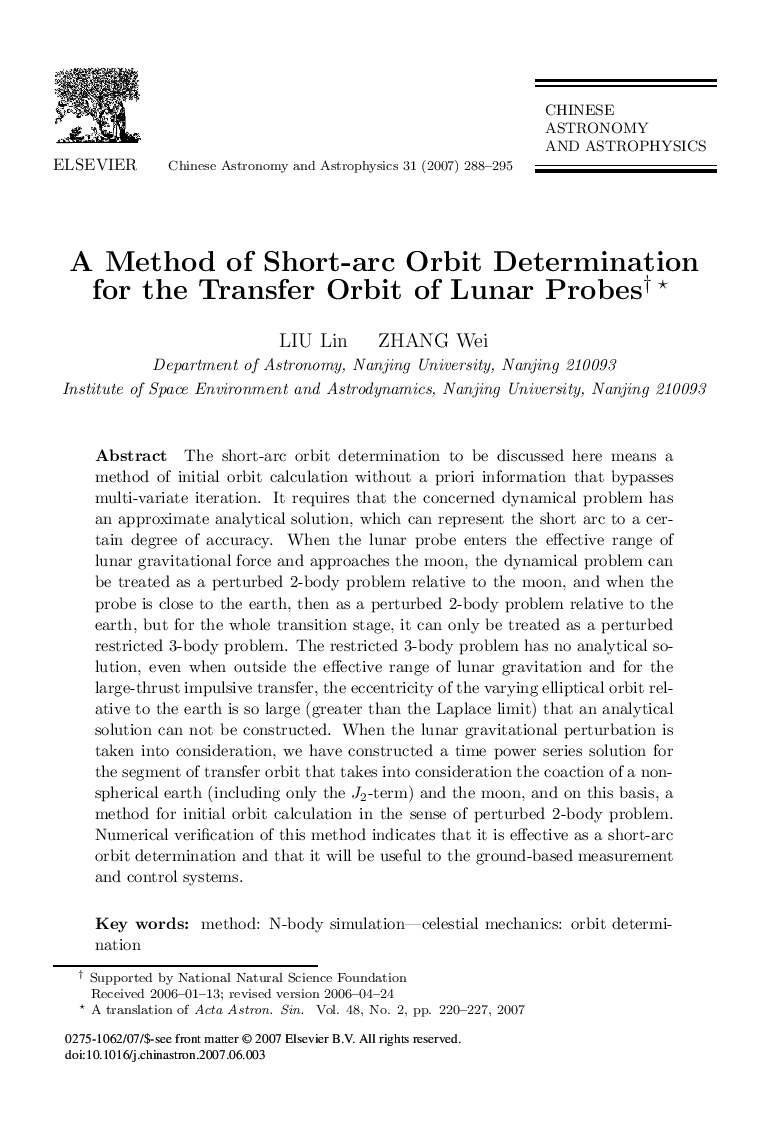| Article ID | Journal | Published Year | Pages | File Type |
|---|---|---|---|---|
| 1772206 | Chinese Astronomy and Astrophysics | 2007 | 8 Pages |
The short-arc orbit determination to be discussed here means a method of initial orbit calculation without a priori information that bypasses multi-variate iteration. It requires that the concerned dynamical problem has an approximate analytical solution, which can represent the short arc to a certain degree of accuracy. When the lunar probe enters the effective range of lunar gravitational force and approaches the moon, the dynamical problem can be treated as a perturbed 2-body problem relative to the moon, and when the probe is close to the earth, then as a perturbed 2-body problem relative to the earth, but for the whole transition stage, it can only be treated as a perturbed restricted 3-body problem. The restricted 3-body problem has no analytical solution, even when outside the effective range of lunar gravitation and for the large-thrust impulsive transfer, the eccentricity of the varying elliptical orbit relative to the earth is so large (greater than the Laplace limit) that an analytical solution can not be constructed. When the lunar gravitational perturbation is taken into consideration, we have constructed a time power series solution for the segment of transfer orbit that takes into consideration the coaction of a nonspherical earth (including only the J2-term) and the moon, and on this basis, a method for initial orbit calculation in the sense of perturbed 2-body problem. Numerical verification of this method indicates that it is effective as a short-arc orbit determination and that it will be useful to the ground-based measurement and control systems.
